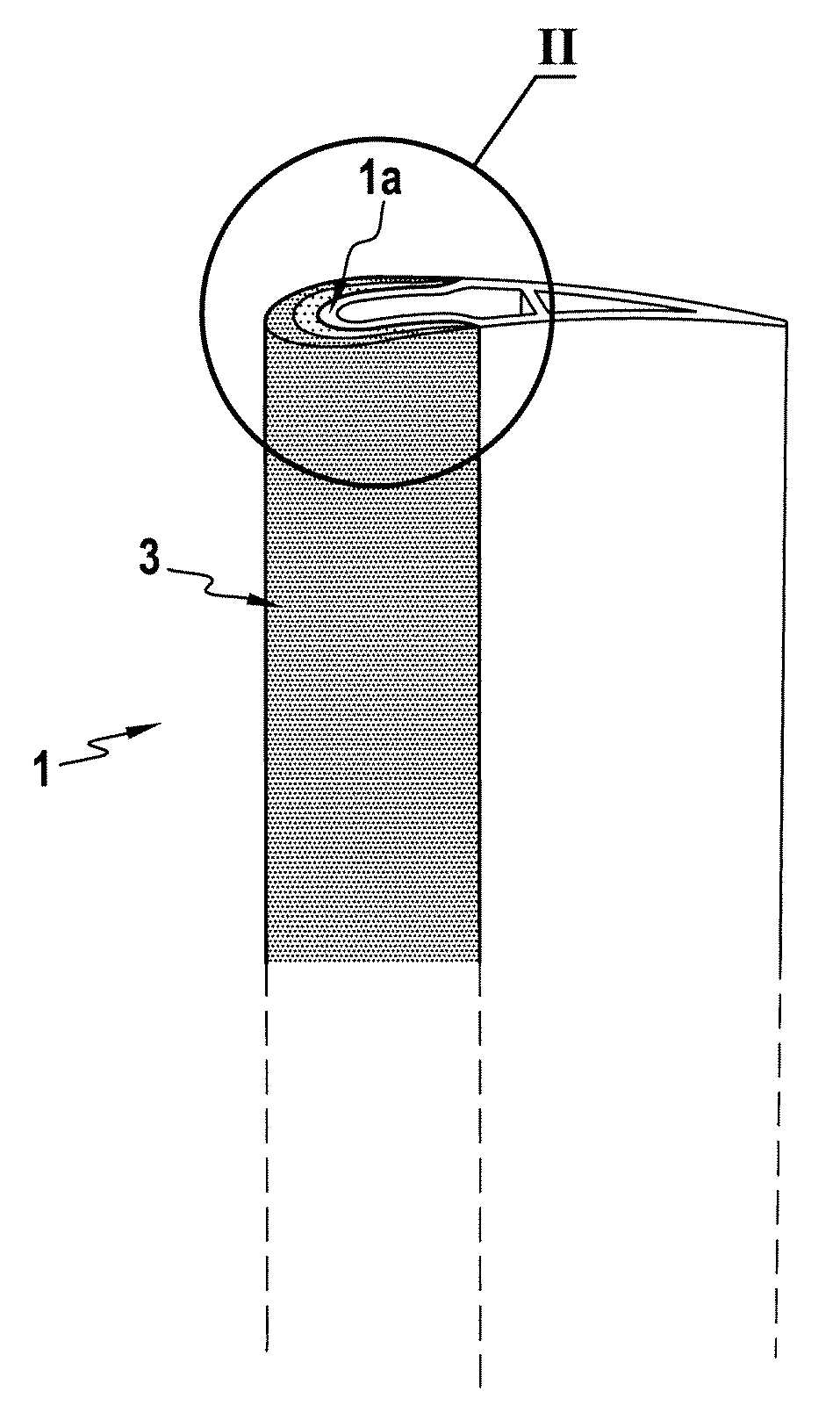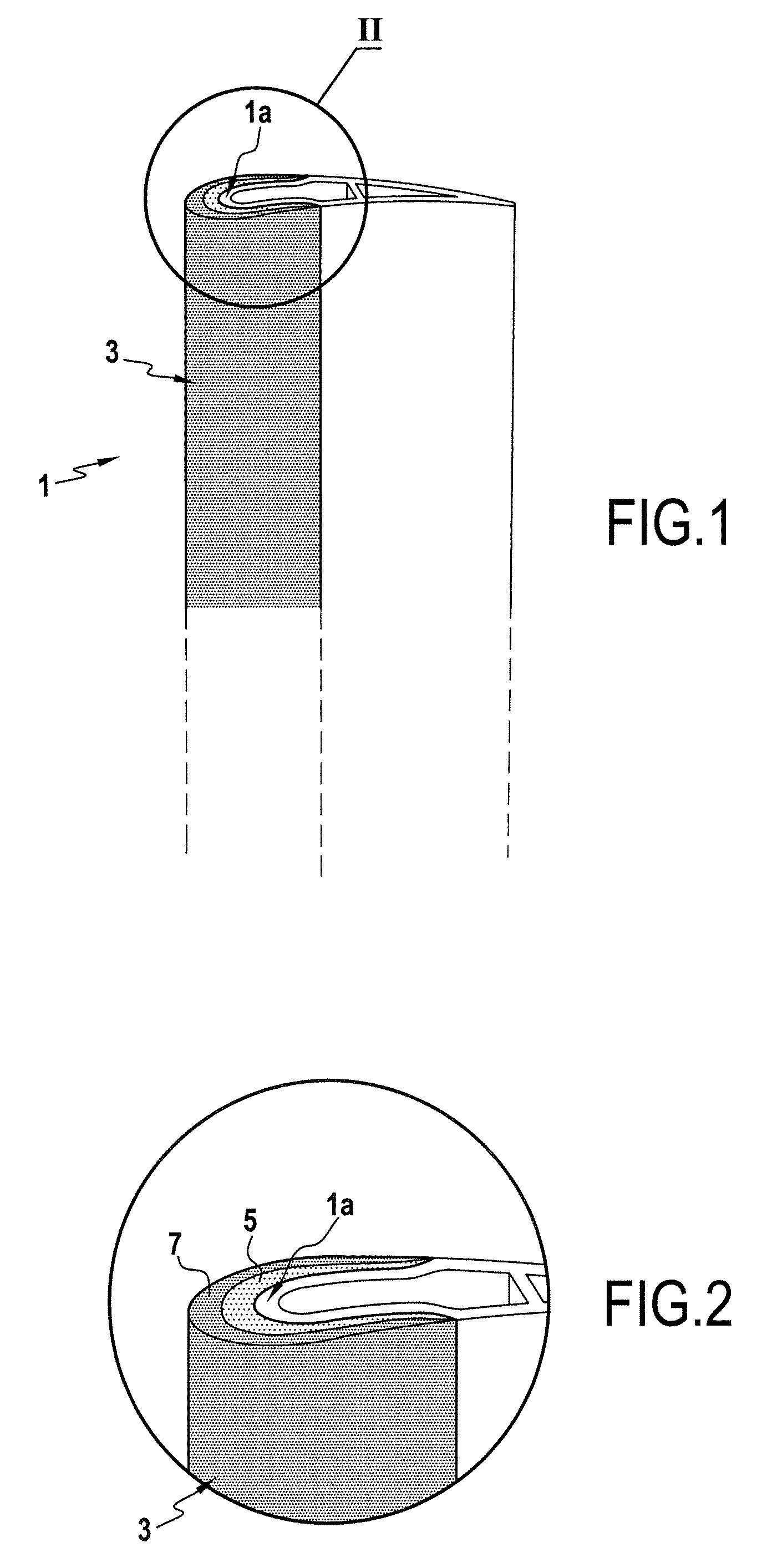Part for protecting the leading edge of a blade
a blade and leading edge technology, applied in the field of aviation, can solve the problems of insufficient strength and difficult formation of alloys, and achieve the effects of reducing stress, reducing weight, and reducing weigh
- Summary
- Abstract
- Description
- Claims
- Application Information
AI Technical Summary
Benefits of technology
Problems solved by technology
Method used
Image
Examples
Embodiment Construction
[0016]FIGS. 1 and 2 show the airfoil portion of a turbomachine blade 1. The leading edge 1a of the blade 1 is covered by a protection part 3 of the invention.
[0017]The protection part 3 is substantially U-shaped in section, enabling it to be placed astride the leading edge 1a of the blade 1. The part 3 is made up of two layers, an inner layer 5 and an outer layer 7. The outer layer 7 is of aluminum alloy reinforced with particles of SiC, while the inner layer 5 is made of the same aluminum alloy, but is not reinforced with SiC. Preferably, for aviation applications, an aluminum alloy of the 7000 series is selected.
[0018]Naturally, the protection part may have more than two layers, with the content of SiC particles in each layer increasing going from the inside towards the outside. Thus, in an embodiment not shown, the protection part is made of four layers C1, C2, C3, and C4 with the SiC content in the inner layer C1 being zero, about 10% by weight in C2, about 20% in C3, and about ...
PUM
| Property | Measurement | Unit |
|---|---|---|
| weight | aaaaa | aaaaa |
| resistance | aaaaa | aaaaa |
| density | aaaaa | aaaaa |
Abstract
Description
Claims
Application Information
 Login to View More
Login to View More - R&D
- Intellectual Property
- Life Sciences
- Materials
- Tech Scout
- Unparalleled Data Quality
- Higher Quality Content
- 60% Fewer Hallucinations
Browse by: Latest US Patents, China's latest patents, Technical Efficacy Thesaurus, Application Domain, Technology Topic, Popular Technical Reports.
© 2025 PatSnap. All rights reserved.Legal|Privacy policy|Modern Slavery Act Transparency Statement|Sitemap|About US| Contact US: help@patsnap.com


